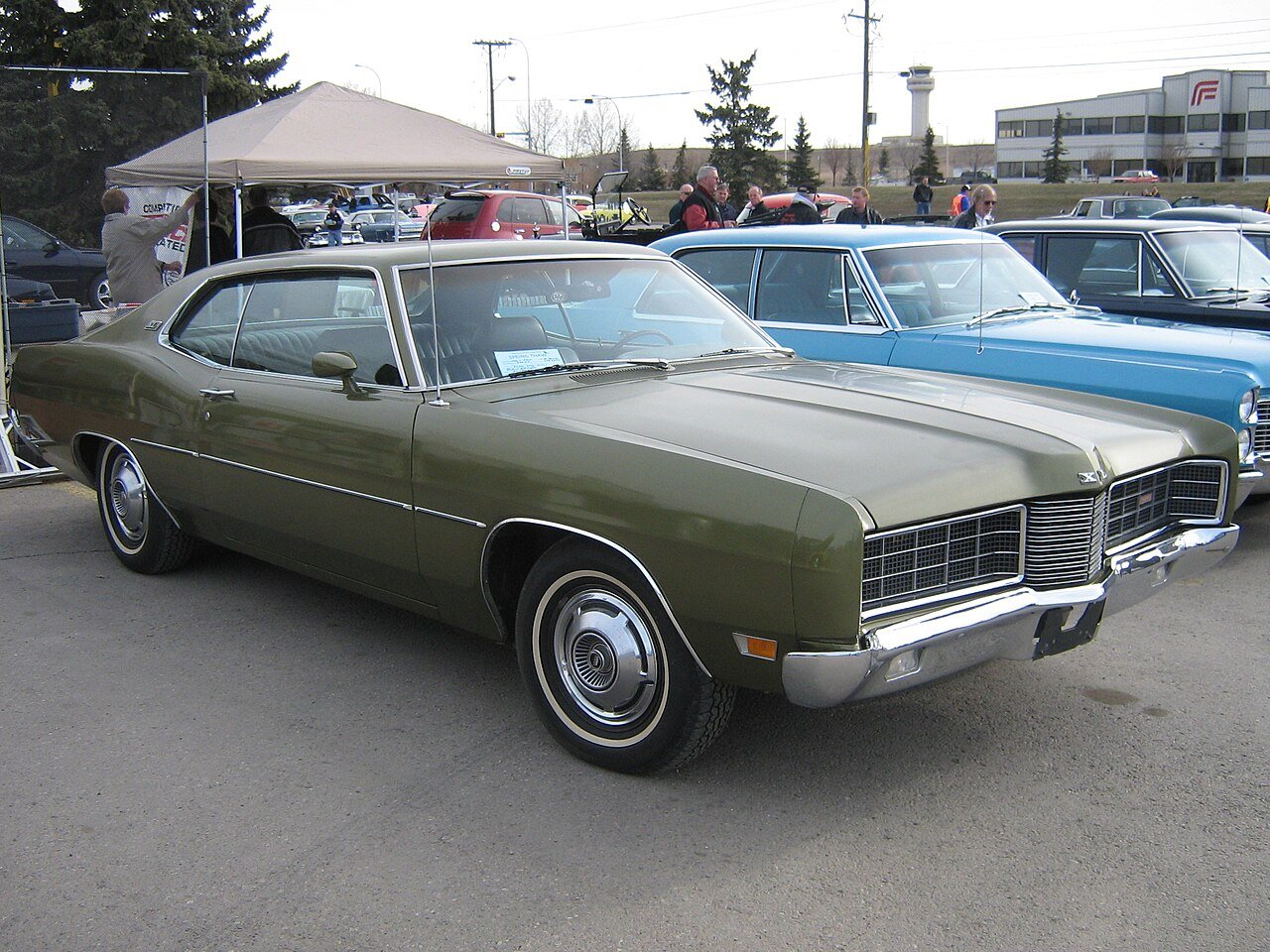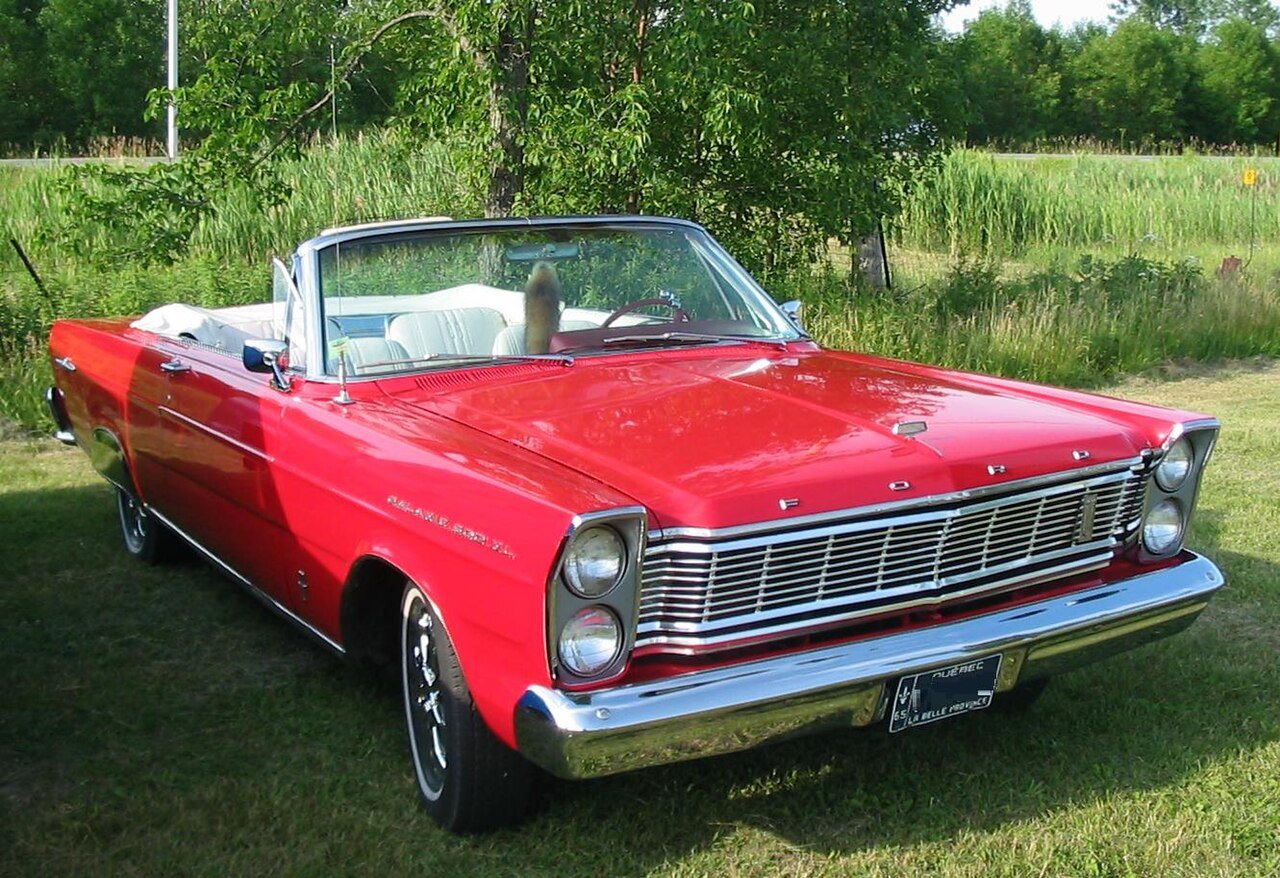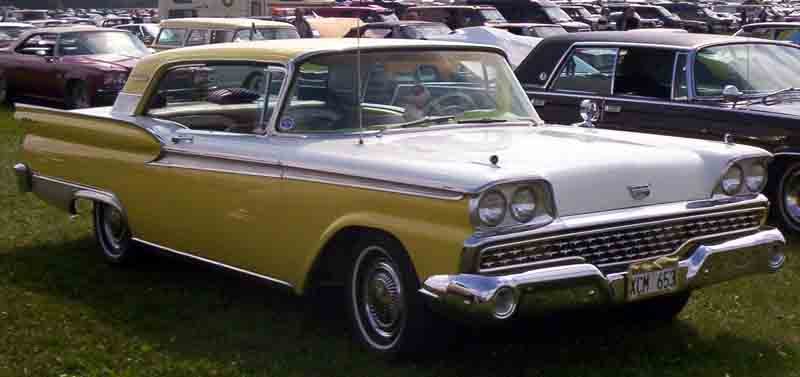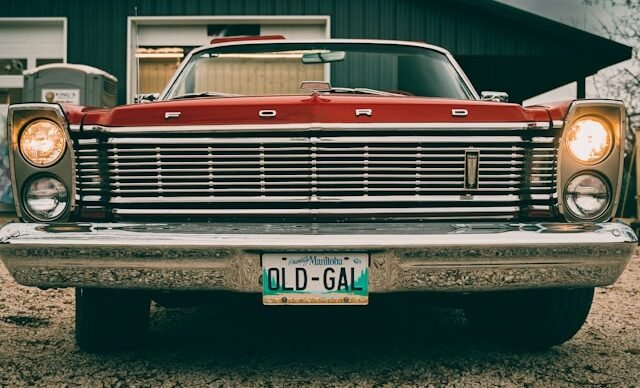In the late 1950s and early 1960s, Ford wanted a car that could compete directly with Chevrolet’s Impala. The result was the Ford Galaxie, a full-size car that combined big American comfort with modern styling. By 1959, the Galaxie name had appeared on Ford’s top-of-the-line models, and by 1962, the Galaxie 500 had become a familiar sight in driveways across America.
For many families, the Galaxie 500 was the perfect fit: roomy enough for kids in the back seat, stylish enough for Saturday night cruising, and affordable for middle-class buyers. With its wide stance, long lines, and understated elegance, it quickly became one of Ford’s most popular full-size cars.
But the Galaxie had another side to it — one that went far beyond suburban streets and family road trips.
Comfort on Sunday, Muscle on Saturday Night

What set the Galaxie 500 apart wasn’t just its looks. Under the hood, Ford made sure buyers had plenty of choices. From small-block V8s to the legendary 427-cubic-inch big-block, the Galaxie could be built as anything from a comfortable family sedan to a serious performance car.
That versatility was the Galaxie’s secret weapon. You could drive the kids to school during the week, then show up at the dragstrip on Saturday night and surprise just about anyone who thought your “family car” was slow.
The Dragstrip Connection
By the early 1960s, American automakers were waging war at the dragstrip and in NASCAR. Ford wasn’t about to be left behind. The Galaxie became Ford’s factory-backed weapon, especially in Super Stock drag racing.
The most famous examples were the lightweight Galaxie 500s, built in small numbers specifically for competition. Ford stripped them of unnecessary weight, swapped steel panels for fiberglass, and loaded them with the 427 V8. These cars were brutally fast and cemented the Galaxie’s reputation as a sleeper-turned-strip hero.
NASCAR also saw its share of Galaxies. With their big engines and aerodynamic styling, Galaxies were tearing up stock car tracks in the early and mid-1960s, often trading wins with Chevrolet’s Impalas.
The Look That Defined an Era
The Galaxie 500 had the kind of styling that defined full-size American cars of the early ’60s:
Wide, low stance that made even the four-door sedans look sporty.
Clean, straight lines with just the right amount of chrome.
Distinctive details, like the “fastback” roofline introduced in 1963, which wasn’t just for looks — it also improved aerodynamics for NASCAR competition.
Inside, the Galaxie offered comfort and style. Bench seats, lots of legroom, and the kind of dashboard design that made you feel like you were piloting more than just a car.
The Galaxie 500XL and Beyond

Ford expanded the line with the Galaxie 500XL, which offered bucket seats, a floor console, and a sportier image. Buyers who wanted something more upscale could move up to the LTD, but for many, the 500XL was the sweet spot: enough flash to stand out, without losing the Galaxie’s everyday usability.
And then came the engines. By 1964, the 427 was the stuff of legend. These Galaxies weren’t just comfortable cruisers; they were full-size cars capable of running low 12s on the quarter-mile in the right hands — remarkable for the era, and shocking when you remembered it was still a “family car.”
Fading Away, But Never Forgotten
By the late 1960s, the muscle car wars had shifted to midsize cars like the Mustang, Fairlane, and Torino. The Galaxie remained a strong seller, but its role as Ford’s performance halo began to fade. Through the ’70s, the Galaxie became more of a comfortable family cruiser again, and eventually the nameplate was phased out in 1974, replaced by models like the LTD.
Still, those early 1960s Galaxie 500s left a mark. They proved that a full-size car could play two roles — family comfort during the week and street or strip warrior on the weekend. For many buyers, that dual personality was exactly what made the Galaxie special.
Why the Galaxie 500 Still Matters Today

For collectors and enthusiasts, the Galaxie 500 remains one of the most interesting full-size Fords ever built. Clean examples of early-’60s Sport Coupés, especially those with the 427 option, are prized possessions. But even the “regular” Galaxie 500s have a charm all their own.
They represent a time when cars were big, bold, and versatile. They remind us of Friday nights at the drive-in, Sunday drives with the family, and the thrill of hearing a big-block V8 roar to life under the hood of a car that looked like it belonged in the church parking lot.
Final Thoughts
The Ford Galaxie 500 wasn’t just another family car. It was proof that size and speed could live together in one package. On one hand, it was the car that carried America’s families across town and across the country. On the other, it was a full-size machine that shocked people at the dragstrip and dominated NASCAR tracks.
That balance — everyday comfort with hidden muscle — is why the Galaxie 500 became a legend. And it’s why, decades later, people still smile when they hear the name.










